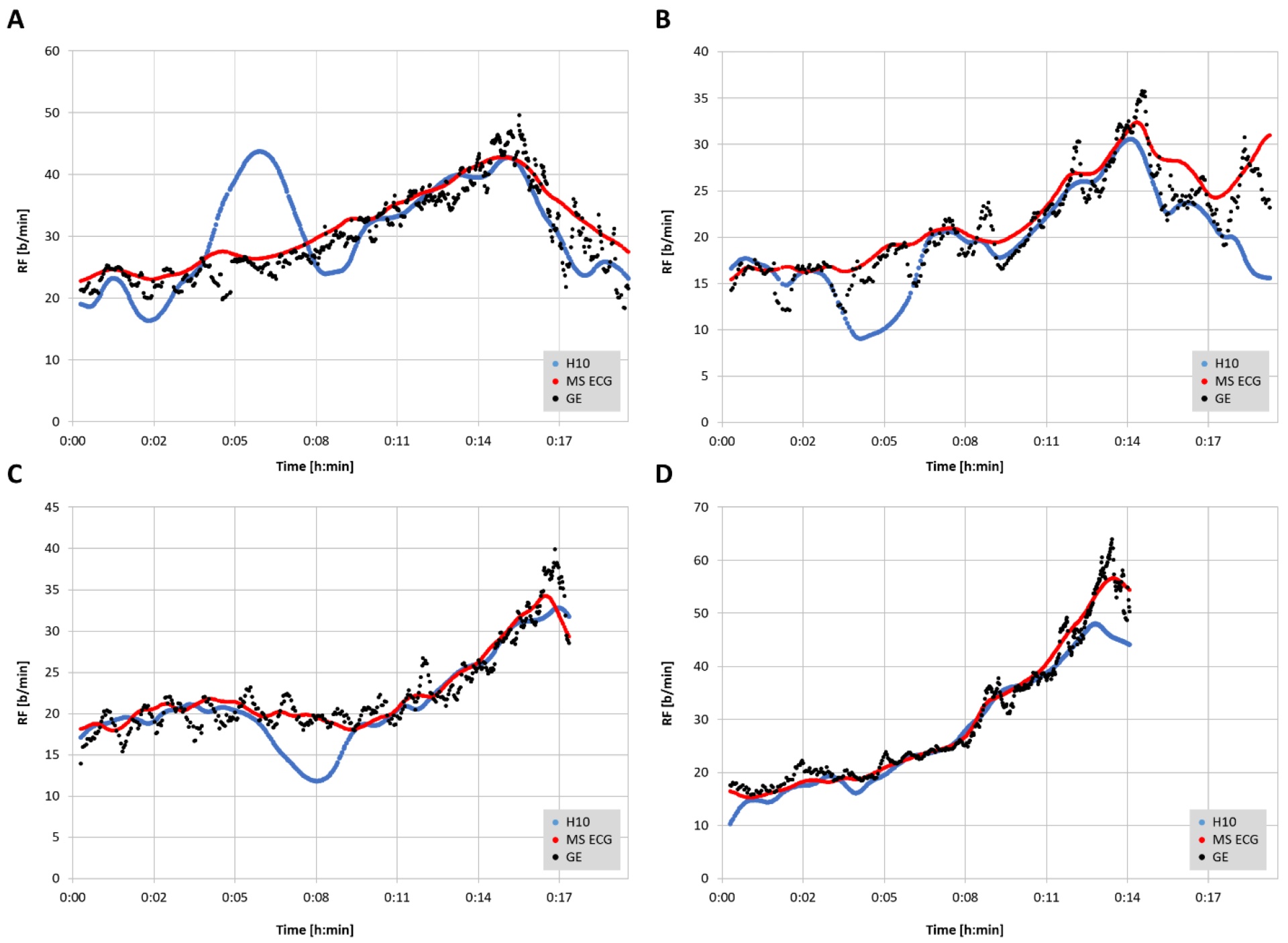New study: Movesense Medical ECG Excels in Estimating Respiratory Frequency

Measuring respiratory frequency, i.e. breathing rate, offers benefits in monitoring both health and disease. Determining respiratory rate is also important in sports science, e.g. in defining ventilatory thresholds and exercise intensity.
There are several ways to detect breathing frequency, such as breathing gas analysis, mechanical stretch sensors, breathing sound analysis, and optical blood measurement, i.e. photoplethysmogram. However, these methods are either expensive, cumbersome to use, or not accurate enough during exercise.
Therefore, the most common method for evaluating breathing rate in exercise is based on heart rate monitoring. It utilizes the phenomenon called Respiratory Sinus Arrhythmia. RSA is reflected in the heart rate variability (HRV) as shorter heart rate intervals during inhalation and longer intervals during exhalation.
In practice, however, the respiratory rate calculated from HRV alone is not very accurate compared to reference measurements. The accuracy of HRV-based breathing rate estimation can be improved with additional information found in the electrocardiogram (ECG) waveform. One of the useful features is the amplitude of the R-wave, which varies with the respiratory rate.
“Movesense Medical sensor ECG appears very promising”
A new scientific study by Bruce Rogers, Marcelle Schaffarczyk and Thomas Gronwald assessed the precision of two methods for defining the respiratory frequency. The article was published on Sensors on Sep 21, 2022. In the study, 21 subjects performed an incremental exercise ramp protocol until exhaustion. Researchers collected their single-channel ECG data with Movesense Medical sensor, HRV data with Polar H10 HR monitor, and reference gas exchange data with Quark CPET metabolic analyzer.
Respiratory rate was calculated from Movesense and Polar recordings with Kubios HRV Premium software and compared with the reference of the metabolic analyzer. With Movesense ECG data, Kubios utilized the R-wave amplitude to improve the HRV-based respiratory rate estimation. With Polar, the estimated respiratory rate was based HRV data only.
The featured image (originally published on Sensors) shows respiratory frequency (RF) plotted over time for Movesense Medical sensor ECG (MS ECG), Polar H10 (H10) and the gas exchange data (GE) in four representative participants.
The results are extremely positive for Movesense. The key finding is that “respiratory rate derived from the Movesense Medical ECG data with Kubios HRV Premium software, tracked closely to the reference device through an exercise ramp. This illustrates the potential for this system to be of practical usage during endurance exercise.”
In the Future Directions chapter, the authors summarize the study with the following conclusion:
“In the context of insights into exercise intensity assessment and threshold demarcation, the respiratory frequency values seen with the Movesense Medical sensor ECG were virtually indistinguishable to that of the reference device values. With a similar form factor to a conventional chest belt monitor and only a minimal additional cost, the Movesense Medical sensor ECG appears very promising for athletic RF estimation in conjunction with Kubios HRV Premium software.”
Integrating into commercial products
The authors also ask, “what are the prospects for future wearable devices (watches, cycling head units) to include incorporation of ECG-derived RF into dedicated apps which record from the Movesense Medical ECG sensor directly?”
The answer is short and simple: The prospects are excellent. Integrating Movesense 1-lead ECG and scientifically validated HRV data into another product or service is a straightforward process with our developer tools and sample code. The ECG data can even be complemented with 9-axis movement measurement that helps to filter ECG artifacts and add specific motion-related user benefits.
With the Movesense sensor and the development platform, you can build a prototype, test it and scale it to the mass market without investing into your own hardware development and manufacturing. You can take the full advantage of our flexible, Finland-based production and white labeling option of the sensor. If needed, our experts are available for support in technical questions and concept definition. We also have recommended development partners for those who don’t have suitable in-house resources.
If you are interested in learning more about using Movesense sensors as part of your solution, get in touch with the team right away!
Read the full research article
Views: 317
